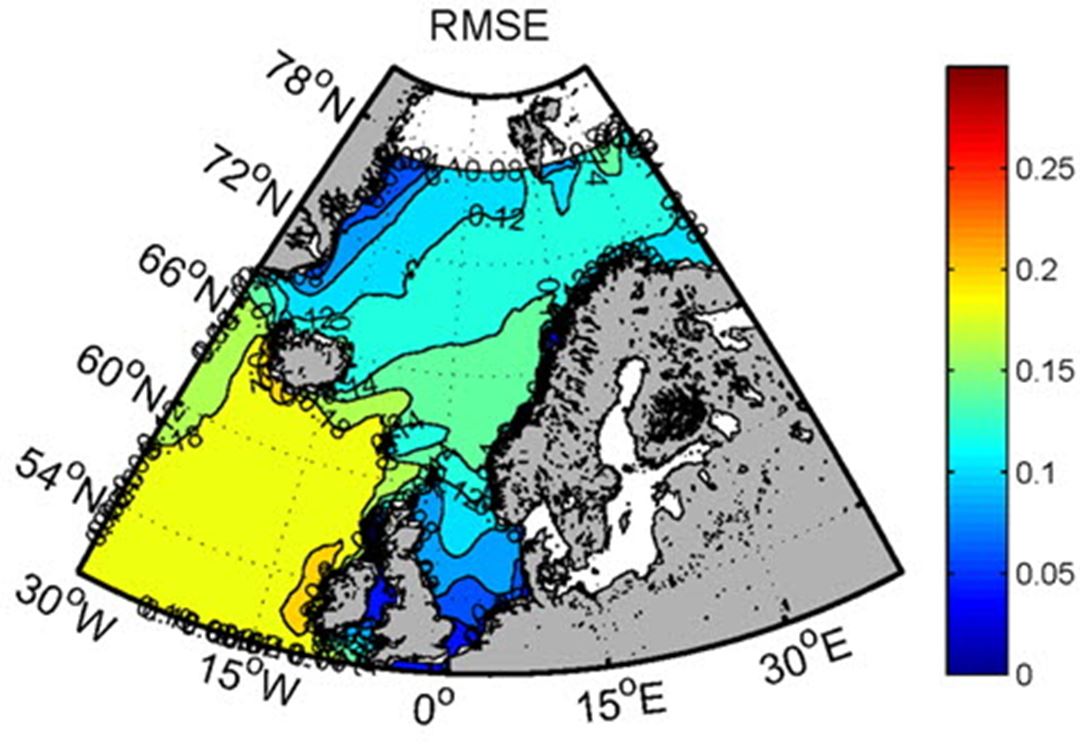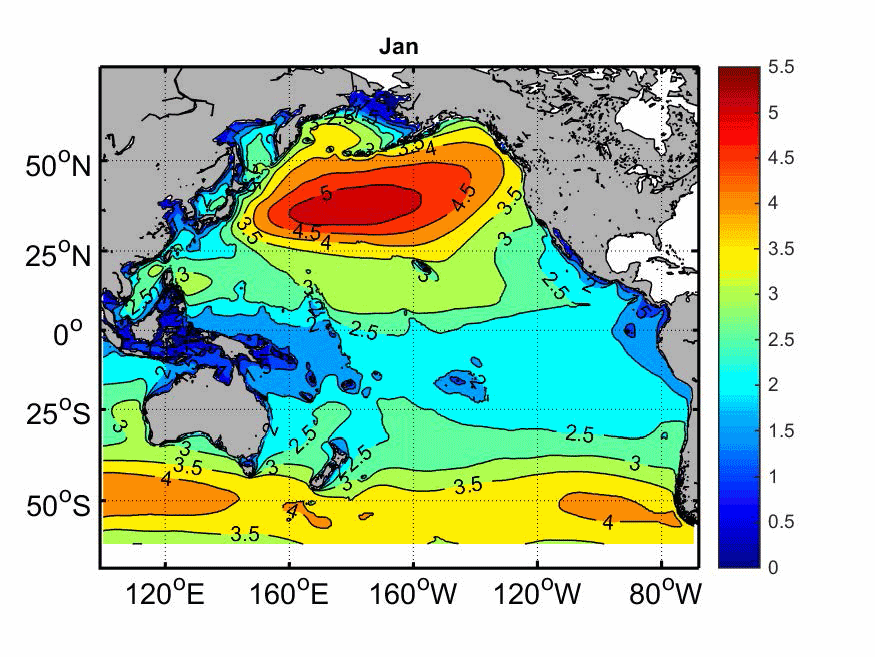To obtain this, our secondary objectives are
- to develop advanced statistical models in space and time to describe past and future wave climate based on model outputs and data;
- to develop appropriate methods for uncertainty quantification that yield joint confidence assessments in space and time;
- to develop a probabilistic impact assessment framework for maritime infrastructure;
- to develop effective visualization tools for high-dimensional projections that can incorporate uncertainty information.
Future changes in ocean wind wave climate have broad implications for the physical infrastructure and environment in coastal, near- and offshore regions. A comprehensive assessment of the impact of climate change and the associated risks in these regions thus requires the consideration of changes in wave climate. However, the understanding of projected changes in wave climate is limited relative to many other climate variables such as temperature and precipitation. This results from the fact that coupled atmosphere-ocean general circulation models (GCMs) typically lack wind wave parameterizations so that wave parameters are not available as a standard model output. The HDwave project aims to decrease this knowledge gap by developing advanced statistical tools for the analysis of newly developed data sets of wave climate projections. The new framework includes methodology to handle multi-model ensembles, provides simultaneous confidence regions in space and time for events of interest and to assess the impact of future changes on maritime infrastructure.

SINTEF's group will work on the development of a flexible nonstationary stochastic model for time series to be applied to wind and wave data in the ocean. This model belongs to the class of periodically correlated (cyclostationary) stochastic processes and can also incorporate other characteristics such as an additive trend. The model, after appropriate modification, can also handle time series with missing values. According to this model, the initial non-stationary series is decomposed into a seasonal mean value (see Figs. 1 and 2), and a residual time series multiplied by a seasonal standard deviation. The seasonal components are estimated using mean monthly values, and the residual time series is modeled by means of various stationary models.
In the present project, the above described model will be implemented for the modeling, analysis and forecasting of a field of datapoints of wind and wave parameters. Furthermore, this modeling can also be combined with other time series forecasting tools; such as Fuzzy Inference Systems/ Adaptive Network-based Fuzzy Inference Systems (FIS/ANFIS), with very good results.
HDwave is a collaboration between researchers at the following institutes:
- NR (coordinator)
- DNV GL
- SINTEF
NR manages the project and will collaborate with the other research partners on developing space and space-time projections, uncertainty assessments and visualization tools.
The project is with funding from The Research Council of Norway, KLIMAFORSK
For more information, visit project's webpage

